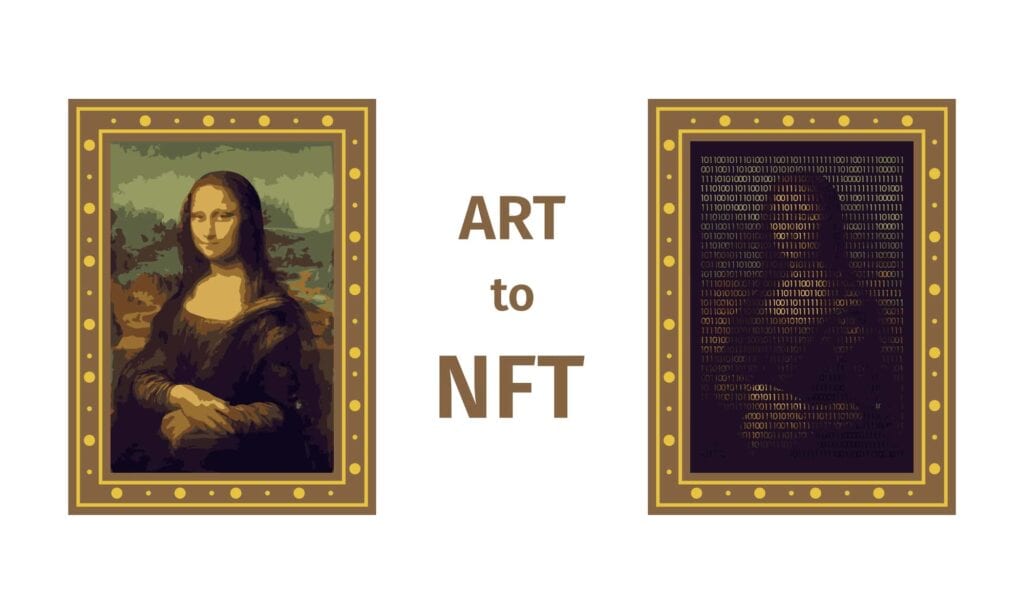If you’re looking for innovative ways to earn passive income, then you may want to consider your options in the cryptocurrency space. There are several different ways to earn income passively in the cryptocurrency industry and we explore your options using one of these methods – bitcoin lending.
Disclaimer: This information is general in nature and for informational purposes only. It is not personal financial advice and has not taken into account your personal financial position or objectives. Make sure to refer to a licensed financial or tax advisor.
Table of Contents
How to Make Passive Income With Bitcoin Lending
Bitcoin lending platforms provide an opportunity to earn passive income on your bitcoin holdings by lending them out and earning interest. This decentralized finance (DeFi) method allows you to put your digital assets to work without having to sell them. By understanding how bitcoin lending works, evaluating the risks appropriately, and following best practices, lenders can achieve attractive risk-adjusted returns.
How Bitcoin Lending Platforms Enable Passive Income
Bitcoin lending platforms operate by connecting lenders and borrowers through an online peer-to-peer marketplace built on blockchain-based smart contracts. They allow you to lend out your bitcoin to vetted institutional and retail borrowers looking to use cryptocurrency without having to liquidate their portfolios.
As a lender, you can earn a yield ranging from 3% to as high as 8% APY by providing liquidity to these lending pools. The loans you help fund are collateralized to varying degrees, ensuring you earn annual percentage yields significantly higher than traditional savings accounts with minimal default risk.
Platforms handle matching borrowers to lenders, facilitating automatic loans, and managing collateral. Once you deposit bitcoin into a lending platform, the platform’s smart contracts match you with borrowers and automatically facilitate loans without the need for manual intervention.
When loans close, borrowers put up bitcoin or other cryptocurrencies as collateral, typically valued at 10-50% above the loan’s value. This overcollateralization protects lenders against market volatility and defaults.
If a borrower’s collateral drops below a liquidation threshold due to downward price movements, they face a margin call forcing them to either add collateral or have their holdings liquidated to repay the loan.
Lenders earn fixed interest rates set by platforms based on demand dynamics within their lending pools. This provides lenders with a stable return and delivers automated, hands-off income from bitcoin holdings without having to manage loans actively.
Evaluating Risks and Returns Across Crypto Lending Platforms
While cryptocurrency lending offers attractive yield opportunities, it also comes with certain risks that lenders need to evaluate properly. When assessing platforms, the following factors provide good signals regarding platform reliability and expected returns:
- Loan Collateralization – Higher loans-to-value (LTVs) indicate higher risks. Seeking platforms enforcing rigorous LTVs below 70% ensures sufficient collateral coverage.
- Track Record and Audits – Platforms with long operational histories and third-party audits offer greater transparency and lower perceived risk.
- Insurance Coverage – Asset insurance and other coverage against theft or loss reduces risks that may arise.
- Security and Compliance – Robust
know your customerprocedures, multifactor authentication, and compliance efforts reassure regarding professionalism. - Interest Rates and Fees – Consider rates net of any fees when comparing yields across platforms.
- Automated Lending Features – Auto-investing and related features enable effortless passive income generation.
Weighing these factors appropriately allows lenders to maximize risk-adjusted, passive return on investment from crypto lending activities. Rates change dynamically across platforms in response to market conditions, so conducting research to find opportunities is worthwhile.
Best Practices For Risk Management and Sustainable Passive Income
While crypto lending offers significant income potential, lenders need to take adequate precautions to earn sustainable returns and effectively manage risks:
1. Maintain Properly Diversified Lending Allocations
Just as with any lending activity, excessive concentration of loans to any single platform or borrower creates overexposure.
Maintaining allocations across multiple decentralized lending protocols spreads concentration risk. It also reduces impact in the highly unlikely event of a platform hack or failure.
Similarly, ensuring their underlying loan pools have adequate diversification protects against isolated underperformance or default of any single borrower.
2. Implement Cold Storage Security for Principal Protection
To ensure principal security against potential cyber risks, lenders should maintain the bulk of their crypto asset holdings in cold storage solutions not connected digitally. This avoids risks that hot wallet components directly interfacing with lending platforms may pose.
Lenders can manually allocate portions of their cold storage holdings into lending platforms to generate yield. Meanwhile keeping the remaining majority portion stored offline enhances asset protection significantly.
3. Structure Portfolios for Risk Tolerance
Based on personal risk tolerances, lenders may decide to allocate anywhere between 25% to 75% into income generating activities, retaining the balance in cold storage. This balance between maximizing yield and principal protection lets lenders sustain consistent returns.
Conservative lenders may choose allocations toward the lower end, limiting risks while still reasonably benefiting from smarter cryptocurrency allocation management.
4. Withdraw Interest Earned to Cold Storage
To balance compound growth from reinvested interest with security objectives, lenders should withdraw a majority of interest earned from lending platforms into cold storage.
This ensures risk exposures do not escalate over long horizons while still allowing healthy compound growth to supplement already attractive lending yields.
5. Maintain Records for Tax Reporting Purposes
In most jurisdictions, interest earned from cryptocurrency lending constitutes taxable income, creating potential taxable events upon receipt of interest payments.
Maintaining accurate records of the dollar value of interest received at time of payment allows lenders to effectively track cost basis, capital gains and losses. This supports tax reporting and minimizes unnecessary obligations.
How Individuals Can Get Started with Bitcoin Lending
Overview of Account Creation Process
Getting started with bitcoin lending platforms involves a straightforward signup process:
- Select Platform – Conduct research to shortlist 1-2 reputable platforms best matching your objectives.
- Create Account – Provide contact information and confirm identity per platform
know your customerprocedures. - Connect Wallet – Link your cryptocurrency wallet to enable asset transfers to the platform.
- Deposit Assets – Allocate and transfer bitcoin from your wallet or cold storage to the platform.
Once your assets reflect in your lending account, you can enable auto-lending features to put your capital to work immediately with the platform managing lending activities automatically.
Accreditation Requirements
Certain lending platforms may limit participation to accredited investors only, requiring evidence of minimum income, net worth or portfolio size. This focuses capital from more qualified participants into institutional grade counterparties while limiting retail involvement.
If you qualify under accredited investor classifications, having documents handy to demonstrate eligibility will streamline onboarding.
Supporting Transfer Liquidity
Having some assets in hot wallets connected to your account allows easy transfers to facilitate lending and reinvestment of earned yields.
However, maintaining the majority of holdings in offline cold storage with good liquid support allows lenders to move funds reasonably quickly between earning assets and more secure storage solutions.
The optionality this balance provides between security and convenience strengthens a lender’s risk profile.
Alternative Approaches to Generate Crypto Passive Income
Beyond lending, various decentralized finance alternatives also allow cryptocurrency investors to generate yield:
Staking – Stakers earn crypto rewards for helping validate transactions on proof-of-stake blockchains. It offers more direct contribution to an ecosystem’s governance in return for moderate yields from native protocol tokens.
Yield farming – By providing liquidity to decentralized exchange pools facilitating crypto trading, liquidity providers can earn transaction fees and governance tokens in exchange for bearing risks of impermanent loss.
Each option carries differing risk, return and capability profiles, suiting different audiences. Yield focused crypto investors may allocate across multiple alternatives balancing risks against income sustainability.
Got it, I’ve added those 11 additional crypto lending platforms to the section:
Leading Crypto Lending Platforms
A variety of crypto lending platforms now exist, giving lenders access to this rapidly growing passive income opportunity. Some top solutions lenders should evaluate include:
| Platform | Key Details |
|---|---|
| Nexo | – Tax Efficient Options – Fast Account Liquidation – High LTVs Available |
| YouHodler | – Diverse Range of Coins – 90% LTV Offered – Turbocharges and Credit Lines |
| Coinbase | – Integrates With Exchange – Institutional Counterparties – Free Withdrawals |
| Kraken | – High Collateralization – Competitive Rates – Established Security Standards |
| Crypto.com | – Generous Promotional Rewards – Native Token Rewards – App Based Access |
| CoinRabbit | – P2P Lending – No Centralized Pool – Credit Score Based |
| SpectroCoin | – Bank-Grade Security – Loan Flexibility – Fiat Liquidity Onramp |
| Nebeus | – Short-Term Loans – Competitive Rates – Instant Fiat Liquidity |
| Bake | – Specialized For BSC Coins – Automated Strategies – Secondary Markets |
| YouHodler | – Diverse Range of Coins – 90% LTV Offered – Turbocharges and Credit Lines |
| AAVE | – Open Source – Flash Loans – Wide Asset Selection |
| Compound | – Largest DeFi Lender – Instant Liquidation Prevention – Daily Interest Accrual |
| MakerDAO | – Oldest Platform – Stablecoin Issuer – Decentralized Governance |
| CoinLoan | – Fiat Liquidity – Instant Loans – Fixed Rate Options |
| MoneyToken | – 0% Fees – Mobile App – High LTV |
| Binance | – Deep Liquidity – Stablecoin Earning – Low LTV |
This list provides a representative range spanning newer entrants to long established protocols employing both centralized and decentralized models across various structures and value propositions.
Conclusion
Significant Income Potential with Prudent Implementations
In summary, bitcoin lending platforms enable cryptocurrency holders to earn attractive yield on holdings without having to liquidate positions or shoulder risks of active crypto trading. For long term hodlers, it provides a prudent way to generate income from assets held for appreciation potential.
While not without risks, bitcoin lending offers a compelling way to supplement crypto portfolio returns. With strong collateral coverage, platform diversification and security precautions, lenders can generate sustainable, passive income at multiples of traditional interest-bearing assets.
By responsibly allocating portions of crypto asset holdings across top-tier lending protocols, investors can enjoy the best of both worlds – retaining long term exposure to digital assets while simultaneously meeting regular income needs.
FAQ
What is crypto lending?
Crypto lending is the process of earning interest by lending out your cryptocurrency to borrowers through a lending platform or service.
How can I earn passive income with crypto lending?
You can earn passive income with crypto lending by depositing your cryptocurrency into a lending platform, allowing borrowers to use it, and receiving interest payments in return.
Is crypto lending a reliable way to earn passive income?
Crypto lending can be a reliable way to earn passive income, but it’s important to research and choose a reputable lending platform with a proven track record of security and reliability.
What are the risks associated with crypto lending?
Risks of crypto lending include the potential for borrower default, platform security vulnerabilities, and market volatility affecting the value of the cryptocurrency being lent.
Are the Risks and Benefits of Crypto Lending Similar to Peer-to-Peer Lending?
When weighing the pros of P2P lending against crypto lending, the risks and benefits may appear similar at first glance. Both offer potential for high returns but come with the risk of borrower default. However, crypto lending introduces additional risks due to its volatile nature, such as potential for loss due to market fluctuations.
Are the income generated from crypto lending taxable?
Yes, the income generated from crypto lending is generally subject to taxation. It’s important to consult with a tax professional to understand the tax implications of your crypto lending income.
What are some popular cryptocurrencies for lending and earning passive income?
Popular cryptocurrencies for lending and earning passive income include Bitcoin, Ethereum, and stablecoins like USDC and DAI.
Can I mine or stake cryptocurrencies to earn passive income instead of lending?
Yes, you can earn passive income through cryptocurrency mining or staking, but these methods involve different processes and considerations compared to crypto lending.
How Do Crypto Lending Platforms Compare to Cryptocurrency Masternodes for Earning Passive Income?
Crypto lending platforms offer a more flexible approach to earning passive income cryptocurrency masternodes. With lending, investors can earn interest by loaning out their crypto. Masternodes, on the other hand, require a large initial investment and technical knowledge to maintain. Both options have their pros and cons for earning passive income.
How does yield farming and liquidity pooling contribute to earning passive income with crypto?
Yield farming and liquidity pooling are strategies that involve providing liquidity to decentralized finance (DeFi) protocols in exchange for rewards, contributing to passive income generation in the crypto space.
Are there risks involved in earning passive income from crypto through yield farming and liquidity pooling?
Yes, yield farming and liquidity pooling carry risks such as impermanent loss and vulnerabilities in the protocols used, so it’s important to carefully assess the potential risks and rewards.
What factors should I consider before getting started with earning passive income through crypto lending?
Before getting started with crypto lending, it’s important to consider factors such as the reputation and security measures of the lending platform, the terms and conditions of lending, and the potential risks involved in the lending process.







